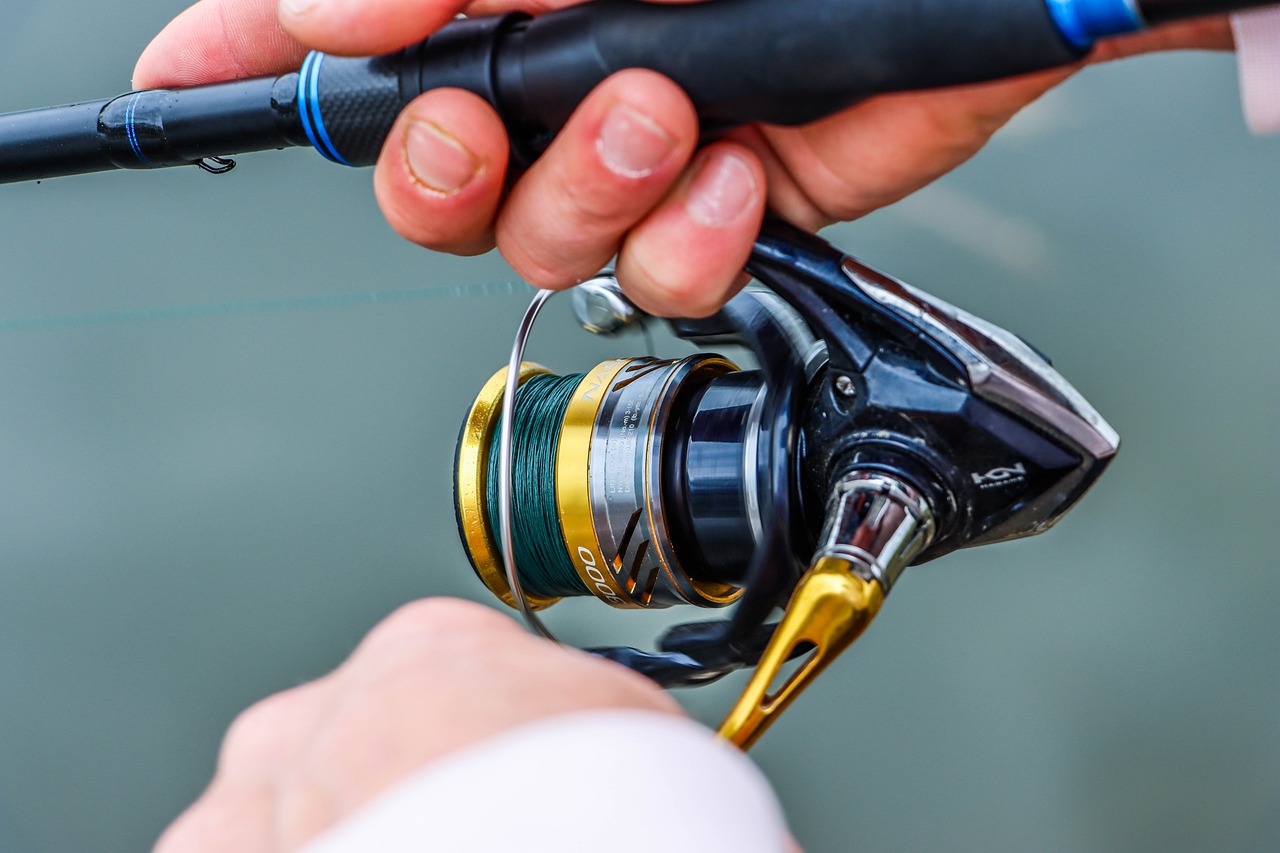A fishing reel is an angler’s best friend, and choosing the right one is a stressful task that requires time and research.
Most inexperienced anglers assume that all fishing reels are the same and do not pay any heed to the gear ratio. I used to be one of them and would often return home, dejected and empty-handed, unable to understand where I was going wrong. Luckily, my father came to my aid and pointed out the importance of the proper gear ratio.
What Is The Best Gear Ratio For A Fishing Reel?
The best gear ratio, as agreed upon by most experienced anglers, is 6:0:1. Therefore, for every revolution of the handle, the spool will spin six times, thus improving retrieval speed and the reel’s torque. This gear ratio is considered ideal since it is versatile and can tackle spinnerbaits, jigging, and jerk baits. However, gear ratios vary for different reel models and fall into three categories: low-gear, medium-gear, and high-gear ratio.
But, this is just a brief snippet of what is to come next. There are several factors that go into determining the best gear ratio for your fishing reel. So, without further ado, let’s dive right in!
How To Determine Gear Ratio?
As a young angler, I was under the impression that a faster gear ratio will improve the efficiency of the fishing reel and will make my fishing endeavours more fulfilling. However, my experience has taught me that’s far from the truth. The correct gear ratio depends on what you intend to catch, what technique you are using for it, and the type of fishing reel in hand.
Once you have determined the technique and bait, finding a suitable gear ratio for your reel will be a cakewalk.
Finding The Best Gear Ratio
As I have mentioned earlier, there are three divisions for gear ratios. Let’s see what they are.
1. Low Gear Ratio
A low gear ratio retrieves the line at a slower pace and ranges from 4:1 to 5:4:1. Although slower, they have more crank torque.
As such, the powerful torque of the reels facilitates easy retrieval, even if it is at a slower pace.
Usually, slow reels are ideal for deep-diving crankbaits, slow-rolling spinnerbaits, and live or heavier baits. Since heavier lures put a lot of pressure on your fishing line, slow movement keeps them in one area (usually, the strike zone) for a long time. This improves your chances of hooking a prey.
Besides, the baits are allowed to reach maximum depth in the water without scaring the fishes.
2. Medium Gear Ratio
Medium gear ratio varies from 6:1 to 6:4 and is the most widely accepted fishing reel gear ratio. This is mainly owing to its ability to work with different baits, including castable umbrella rigs, medium-depth cranks, squarebill crankbaits, etc.
Often dubbed the “workhorses” of bass anglers, medium gear ratio reels are easy to control, and you can slow down or increase the retrieve speed at your convenience.
Medium gear ratios strike a balance between speed and efficiency. While spinner baiting, for instance, I’ve noticed that the 5:4:1 ratio is too slow, whereas the 7:1:1 ratio is quite fast. However, I find the medium gear ratio quite comfortable to work with.
3. High Gear Ratio
I like using a high-speed reel for fast fishing techniques like worming or pitching since it has a ratio of 7:1 to 10:1:1. Also, since their retrieval rates are pretty high, they are ideal for large and deep fishing areas. In addition, anglers who spend all day on the sea can work with it without straining their hands.
Baits such as topwater lures, giant worms, Texas rigs, jigs, and jerkbaits work well with high-speed reels since it cranks faster and prevents them from getting ripped too quickly. Thus, after each presentation, you can reel in the bait briskly to prepare for a new cast.
Besides, if the lure is bitten off in short movements, you can retrieve the reel immediately, thus increasing your chances of getting a hookset. One minor shortcoming of high-speed reels is that they usually have low torque power.
However, with advancements in technology, they have become much more robust and are preferred by bass anglers for quick action or to catch larger fishes.
Gear Ratio For Spinning Reels
Novice anglers can use spinning reels since they are relatively lightweight and easy to work with. You can use it for various applications such as jigging and spinner baiting. Spinning reels have an ideal gear ratio of 6:0:1.
Gear Ratio For Baitcasters
Baitcasters have a smaller diameter spool but are more powerful, drawing heavy fishes with less struggle. This is used by bass anglers to delve deeper into the sea and offers better accuracy. The best gear ratio for baitcasters is 6:4:1.
Conclusion
That’s all there is to know about the best gear ratio for a fishing reel.
Before you embark on a fishing escapade, ensure that you have the right fishing reel and bait for the job. Besides, if you plan to fish all day long, then I recommend using a reel with a mid to high gear ratio that allows faster retrieval and reduces hand fatigue.
If catching an enormous fish is the target, then a reel with a low gear ratio will come in handy.
I hope my guide has successfully answered your question and cleared any doubts you might have in mind. So, pack your tools and go catch some fish! And, don’t forget to tell me all about it in the comments below.

Niels Thomas is a wildlife expert and fishing fanatic that works with major fishing brands like Deeper Sonar, Abu Garcia, Berkley, PENN, BassPro and Pure Fishing. Through sharing the best fishing tips, tricks, gear reviews, locations and much more he hopes to inspire fishing fanatics to start their own journey towards becoming the King of the Catch!

